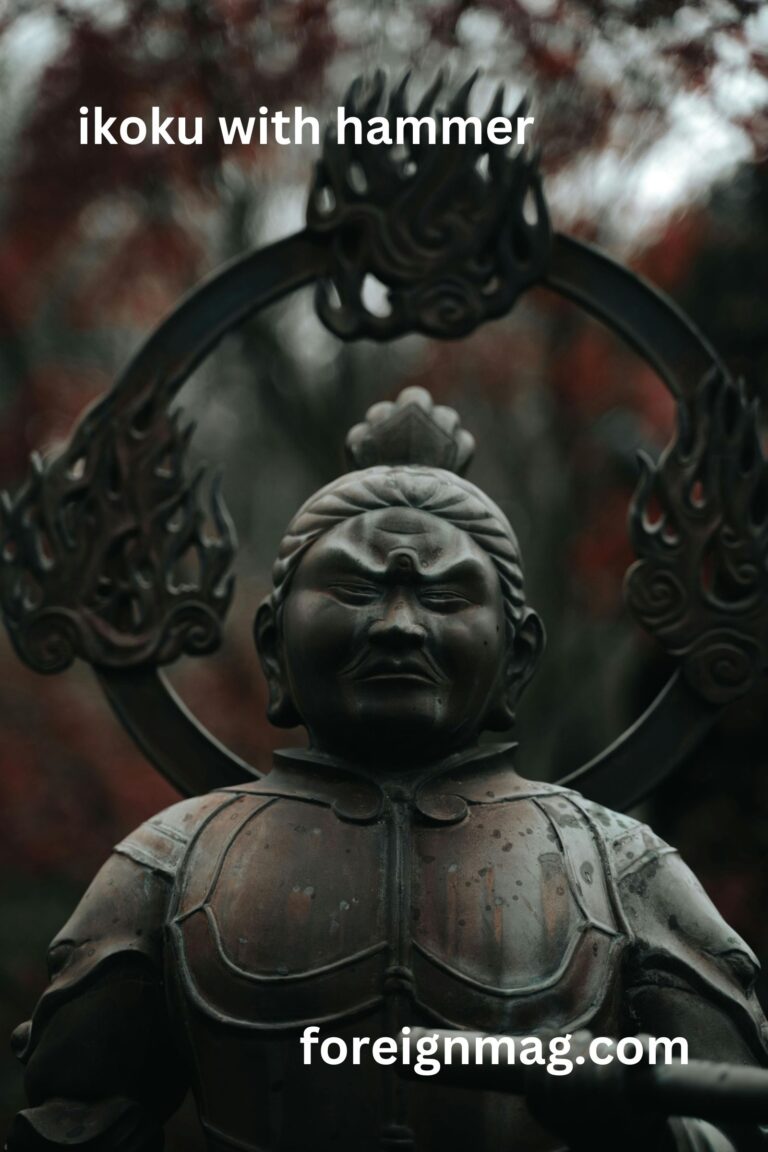Art has always been a reflection of culture, emotion, and human ingenuity. Among Japan’s rich artistic traditions, bronze sculptures hold a special place for their intricate craftsmanship and historical significance. One such masterpiece is the “Ikoku with Hammer” Japanese bronze sculpture. This remarkable creation embodies the beauty of Japanese artistry while telling a story of dedication and skill.
Origins of Japanese Bronze Sculptures
Bronze sculptures have a deep-rooted history in Japan, dating back to the Yayoi period (300 BCE – 300 CE). Early works often had religious significance, such as the creation of Buddhist statues during the Asuka and Nara periods. Over time, Japanese artisans perfected bronze casting techniques, blending functionality and aesthetics in their creations.
The “Ikoku with Hammer” sculpture belongs to a lineage of artistic tradition where tools, human figures, and dynamic poses were meticulously rendered to celebrate cultural and individual themes.
Decoding the Name: “Ikoku with Hammer”
The title “Ikoku with Hammer” offers an intriguing insight into the sculpture. “Ikoku” translates to “foreign land” or “different country” in Japanese, evoking a sense of the unknown or an otherworldly presence. Paired with the hammer, a symbol of labor and craftsmanship, the sculpture combines themes of discovery, effort, and creation.
The juxtaposition of “Ikoku” and the hammer might symbolize the balance between the exotic and the familiar or the merging of cultures through art and labor. This interplay makes the sculpture not only visually captivating but also conceptually profound.
A Closer Look at the Sculpture
Design and Posture
The figure in “Ikoku with Hammer” is typically portrayed in a poised and dynamic stance, emphasizing motion and intent. The hammer, a central element, is held with a sense of purpose, showcasing strength and determination. The figure’s attire and details often reflect a blend of traditional and modern elements, celebrating Japan’s evolving artistry.
Material and Technique
Bronze, a durable and versatile medium, is the foundation of this sculpture. Japanese bronze casting techniques, perfected over centuries, allow for intricate detailing and smooth finishes. The patina, achieved through controlled oxidation, adds depth and character to the piece, enhancing its visual appeal.
Symbolism in Motion
The act of wielding a hammer symbolizes creativity, strength, and transformation. In Japanese culture, tools often carry a spiritual essence, representing human connection to craft and nature. This sculpture elevates a common action into an artistic narrative, reminding viewers of the value of perseverance and innovation.
Historical and Cultural Context
Japanese bronze sculptures are deeply intertwined with the country’s history and spiritual beliefs. From ancient bells used in rituals to intricate statues in temples, bronze has been a medium of cultural expression for centuries.
The “Ikoku with Hammer” sculpture resonates with the cultural emphasis on craftsmanship. It serves as a tribute to laborers, artisans, and creators who shape the world with their hands. Its themes align with the Japanese philosophy of monozukuri, or “the spirit of making things,” highlighting the dedication and respect inherent in craftsmanship.
Artistic Appeal and Modern Interpretations
The “Ikoku with Hammer” sculpture appeals to both traditionalists and contemporary art enthusiasts. Its intricate detailing and cultural depth make it a sought-after piece for collectors and art connoisseurs. In modern times, such sculptures are celebrated not only for their aesthetic value but also for their ability to evoke introspection and conversation.
Artists inspired by this masterpiece often incorporate similar themes in their work, blending traditional techniques with modern sensibilities. The “Ikoku with Hammer” sculpture thus stands as a bridge between the past and the present, inspiring future generations to appreciate the timeless art of bronze sculpting.
Appreciating the Craftsmanship
To truly appreciate a sculpture like “Ikoku with Hammer,” one must understand the labor-intensive process behind its creation. The lost-wax casting method, commonly used in Japanese bronze sculpture, involves meticulous steps:
- Creating a detailed wax model of the design.
- Enveloping the wax model in a heat-resistant mold.
- Melting the wax away to leave a hollow form.
- Pouring molten bronze into the mold and allowing it to cool.
- Breaking the mold to reveal the sculpture, followed by cleaning and polishing.
Each step requires precision and expertise, making every piece a testament to the artisan’s skill and patience.
Collecting and Preserving Japanese Bronze Sculptures
The allure of owning a Japanese bronze sculpture lies in its combination of history, artistry, and cultural significance. Collectors value pieces like “Ikoku with Hammer” for their rarity and beauty. Preserving these sculptures involves careful maintenance to prevent corrosion and retain their luster. Displaying them in controlled environments with minimal humidity ensures their longevity.
The Legacy of “Ikoku with Hammer”
“Ikoku with Hammer” transcends its material form, representing the dedication and ingenuity of Japanese artisans. It invites viewers to reflect on the universal themes of creation, perseverance, and the beauty of labor. As a piece of art, it not only adorns spaces but also enriches the soul by connecting the past to the present.
Conclusion
The “Ikoku with Hammer” Japanese bronze sculpture is more than just a work of art—it is a celebration of cultural heritage, human effort, and artistic brilliance. Its intricate design and profound symbolism capture the essence of Japanese craftsmanship, offering a timeless reminder of the value of creativity and hard work. For those who admire the fusion of tradition and innovation, this sculpture stands as an enduring masterpiece, inspiring admiration and contemplation for generations to come.

1 Comment
Pingback: A Comprehensive Guide to Marriott: A Legacy of Hospitality - Foreign Mag